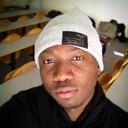Signed to Twentieth Century-Fox since October 25, 1939, Betty Grable informed studio chief Darryl F. Zanuck during production that she would not commit to the remaining three years of her latest contract. On June 3, 1953, a studio press release announced the official split. Returning only once to Fox, Betty would star in How to Be Very, Very Popular (1955), a vehicle in which Marilyn Monroe refused to appear and was replaced by Sheree North. Two unfulfilled proposals to have Grable film again at Fox were the mother role (subsequently played by Ginger Rogers) in Teenage Rebel (1956) and then in 1964, another mom part in a project ultimately canceled called "High Heels."
Ben-Hur - Trivia, Questions and Fun Facts
-
-
The 300 sets built required five years of research and 14 months of labor.
-
Stephen Boyd wore lifts in his shoes to make his height more on a par with Charlton Heston's.
-
Although the original 35mm release was in Technicolor (there is no such thing as a 70mm Technicolor print, as Technicolor was never equipped to make them; all the original release's 70mm prints were in MetroColor), all of the 1974 release's prints were in MetroColor. More significant was that the 1974 release was cut from the original running time of 212 minutes to 170, and the film shorn of its musical overture and entr'acte (it was presented without intermission). Most egregiously, the sequence of some scenes was re-ordered, an almost unheard-of bowdlerization of a successful film, especially one that had won an unprecedented eleven Academy Awards.
-
Held the record for most Oscars won (11) for 38 years, until "Titanic" matched it in 1998.
-
Of the three Academy Awards that Miklós Rózsa won, he cherished the one he won for this film the most, because of the score's size, complexity, intricacy, emotional content and its being a distillation of his more than 20 years' experience scoring films.
-
Included among the American Film Institute's 2001 list of the top 100 Most Heart-Pounding American Movies.
-
When film students are given a tour of the Panavision facility, they are shown the chariot race from this film in full 70mm Ultra Panavision (2.76:1).
-
William Wyler was a renowned stickler for detail. Charlton Heston recalled one particular scene where Judah Ben-Hur simply walks across a room upon his return from slavery. Such a simple scene required eight takes before the actor finally asked Wyler what was missing. The director informed him that he liked the first take where Heston had kicked a piece of pottery to give the scene its only sound. Heston, on the other hand, had assumed that Wyler didn't like the kicking and had therefore deliberately avoided doing it again.
-
Sheik Ilderim's white horses were brought in from Lipica, Slovenia, the original home of the snow-white "Lipizzaner" horse breed. Glenn H. Randall Sr. trained 78 horses for the film, starting months before photography began.
-
The second of two films shot in the MGM Camera 65 process (eight more would be shot after the process was re-named Ultra Panavision). It was intended to be the first, but production delays led to MGM using it first on Raintree County (1957). Like the Todd-AO format (introduced in 1953), MGM Camera 65 used 65mm negative stock that was then printed to 70mm film for roadshow release prints, or optically printed down to 35mm for general release. Unlike Todd-AO, though, Camera 65 operated at a standard speed of 24 fps from the beginning and utilized 1.25x anamorphic lenses to optically squeeze an aspect ratio of 2.76:1 into the 2.20:1 Todd-AO frame. These lenses were developed and manufactured by Panavision, a natural evolution on its work to improve the quality of anamorphic camera and projection lenses for the CinemaScope system. The extra 5mm of film between the 65mm negatives and 70mm prints was comprised of 2.5mm outside the perforations on either side of the film, allowing for up to four stripes of magnetic oxide carrying up to six discrete channels of sound--offering greatly superior sound quality in comparison to the mono optical tracks on 35mm prints at the time. When MGM sold its camera department to Panavision in 1961, the Camera 65 process was renamed Ultra Panavision 70 but remained technically identical. The complexity of anamorphic photography and post-production, however, meant the system was short-lived--especially due to the use of unique 1.25x anamorphic lenses rather than the 2x power used for CinemaScope--and the process was last used for Khartoum (1966). Most of the cameras were used on Super Panavision 70 productions--Panavision's exact copy of the non-anamorphic 24 fps Todd-AO process--before being replaced by the Panaflex 65 cameras used in Panavision System 65. Notably, due to the complexity and cost of projecting anamorphic 70mm prints, recent re-issue 70mm prints of "Ben-Hur" have been printed from optically unsqueezed negatives to allow their projection on normal 70mm equipment with only slight cropping of the sides of the picture.
-
According to Gore Vidal's interview in The Celluloid Closet (1995), Ben-Hur and Messala were former lovers and Messala betrayed Ben-Hur because their relationship ended. According to Vidal, he discussed this with Stephen Boyd (Messala) ahead of shooting, but this information was hidden from Charlton Heston because it was felt that he could not handle it. After Vidal's interview, Heston vehemently denied that Ben-Hur had any homosexual subtext or that Vidal had any real involvement with writing the script. Vidal responded by quoting extracts from Heston's 1978 autobiography "An Actor's Life", in which Heston admitted that Vidal had written much of the finished screenplay. Wherein Vidal added a gay subtext between Ben-Hur and Messala, all of the other "Ben-Hur" screenwriters - Karl Tunberg, Maxwell Anderson, S.N. Behrman, and Christopher Fry - added two conflicts between the two characters, which revolved around (1) one's devotion to his country and one's devotion to God; and (2) how one person can be redeemed after replacing his/her humanity with hatred and vengeance. Upon receiving the Academy Award for Best Actor of 1959, Heston had only one "Ben-Hur" screenwriter to thank in his acceptance speech: Christopher Fry.
-
After shooting, the studio ordered the dismantling of all the sets (at a cost of $150,000), partially to sell off whatever could be salvaged and partly to prevent producers of low-budget Italian "epics" from using the same materials.
-
The desert sequences were all set to be filmed in Libya until authorities in the country--a Muslim nation--realized that the film was promoting Christianity. The government ordered MGM out of the country, forcing the studio to shift filming to Spain, which has the only desert in Europe.
-
Charlton Heston was initially offered the role of Messala.
-
According to Sir Christopher Frayling's biography of Sergio Leone, Leone apparently recalls William Wyler arriving on set early one morning with Charlton Heston, attired in cowboy garb and doing some re-shoots for The Big Country (1958) on the vast Cinecita back lot in Rome.
-
The only Best Picture Oscar nominee that year to be also nominated for Best Art Direction (Color), and Best Costume Design (Color), and Best Special Effects.
-
Judah Ben-Hur was called "41" seven times total. The first five were by Quintus Arrius (Jack Hawkins), the sixth was by slave 42 (John Glenn), the seventh was by Quintus Arrius as he and Ben-Hur floated on the debris from the sunken ship.
Ben-Hur - Trivia, Questions and Fun Facts
Ben-Hur - Trivia, Questions and Fun Facts
Ben-Hur - Trivia, Questions and Fun Facts
Ben-Hur - Trivia, Questions and Fun Facts
Ben-Hur - Trivia, Questions and Fun Facts
Ben-Hur - Trivia, Questions and Fun Facts
Ben-Hur - Trivia, Questions and Fun Facts
Ben-Hur - Trivia, Questions and Fun Facts
Ben-Hur - Trivia, Questions and Fun Facts
Ben-Hur - Trivia, Questions and Fun Facts
Ben-Hur - Trivia, Questions and Fun Facts
Ben-Hur - Trivia, Questions and Fun Facts
Ben-Hur - Trivia, Questions and Fun Facts
Ben-Hur - Trivia, Questions and Fun Facts
Ben-Hur - Trivia, Questions and Fun Facts
Ben-Hur - Trivia, Questions and Fun Facts
Ben-Hur - Trivia, Questions and Fun Facts
Ben-Hur - Trivia, Questions and Fun Facts
Make a Post or Browse
Recently added
© DiscussIMDB, All rights reserved. DiscussIMDB is not affiliated with IMDb







